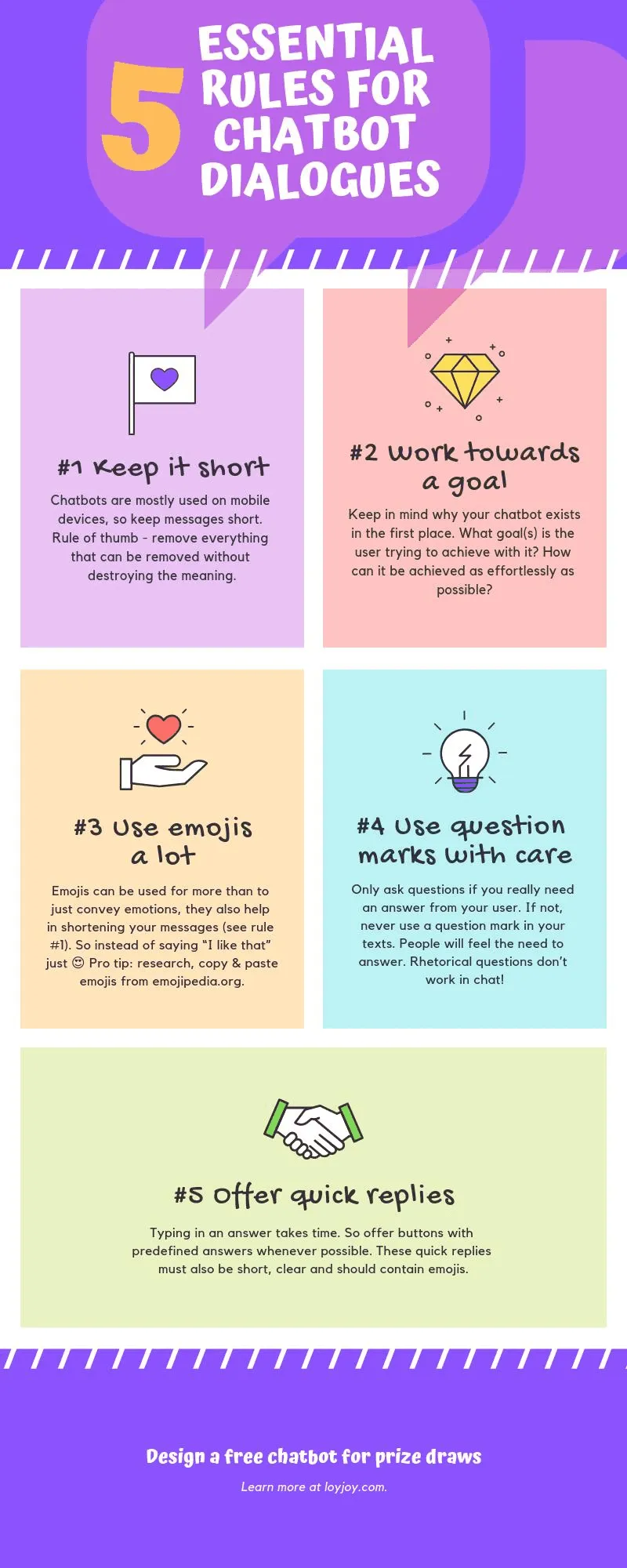Designing Chatbot Experiences That Actually Convert
Get monthly LoyJoy News with Product Updates & Success Stories.
Unsubscribe anytime.

Designing Chatbot Experiences That Actually Convert
Messaging has become our preferred channel of communication. Even in Germany, 90% of internet users can be reached via Messaging . More and more marketers start building chatbots. It turns out, not every chatbot becomes a hit with customers . So what is a best practice in designing conversations that hook customers? Here’s a starter with 5 simple rules to keep in mind when designing chatbots.
#1 Brevity
Chatbots are mostly used on mobile devices, so keep messages short. Rule of thumb - remove everything that can be removed without destroying the meaning. Consider using “&” instead of “and”. Remember Antoine de Saint-Exupéry’s famous quote ”Perfection is not achieved when you can’t add anything anymore, but when you can’t leave anything out”. Well said.
#2 Always work towards a goal
Keep in mind why your chatbot exists in the first place. What goal(s) is the user trying to achieve with it? How can it be achieved as effortlessly as possible? Write down the goals and check for every sentence you write if it is necessary or useful for the goals. Provide value in every step.
#3 Use emojis - a lot
Having a fun time is important for chat experiences to succeed. And it’s a proven fact that using emojis leads to far more engagement . Emojis can be used for more than to just convey emotions, they also help in keeping your messages short (see rule #1). So instead of saying “I like that” just 😍 Pro tip: research, copy & paste emojis from emojipedia.org. Some emojis look quite different or are just missing across platforms, so handle with care and research first.
#4 Use question marks with care
Ambiguity is a killer for chat and voice experiences. Only ask questions if you really need an answer from your user. If you don’t, never use a question mark in your texts. Otherwise, people will feel the need to answer and that might lead them astray. Rhetorical questions don’t work in chat!
#5 Offer quick replies
Let’s face it, we’re all lazy ☺ Now, manually typing in an answer in a chat interface takes some time. Offering buttons with predefined answers (Facebook calls them “quick replies”) makes things a lot easier. These quick replies must also be short (20 characters maximum for Facebook), crystal clear in their meaning and may contain emojis. But you know that already 😉
With these tips in mind, your next chatbot project should be a breeze. Find our infographic below for a shareable summary of these tips. Have fun!
